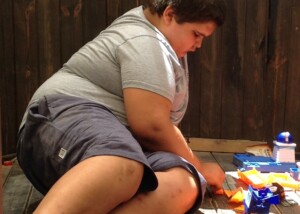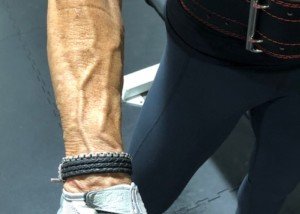How to Fuel Your Brain and Memory with 5 Minutes of Activity
If you struggle with executive function, immediate memory tasks or processing speed, five minutes of exercise can improve your brain function.
Why RFK Jr. Is Obsessed with Autism and Not Obesity Epidemic?
Why doesn’t RFK Jr., go after a REAL epidemic such as obesity or cancer which unlike autism causes widespread death and debilitating chronic illness for millions more?
ALL Exercise Levels Reduce Mental Decline in At Risk Adults

Even light exercise significantly reduces cognitive decline in older adults at risk for Alzheimer’s disease, while staying sedentary proved to be harmful to the brain.
There’s a big difference in brain health between sedentary older adults and those who exercise even at a light level.
In other words, light effort activity joins the ranks of moderate and intense levels when it comes to having a protective effect on the brains of older adults who are at risk for developing Alzheimer’s disease.
Researchers at the University of California San Diego and Wake Forest University have found that both low and moderate-to-high intensity exercise can help reduce memory decline in older adults who are at increased risk for Alzheimer’s disease.
Their findings, published in Alzheimer’s and Dementia: The Journal of the Alzheimer’s Association, are based on the EXERT study (Exercise in Adults with Mild Memory Problems).
This clinical trial involved sedentary older adults with amnestic mild cognitive impairment (aMCI).
This condition involves memory issues and a measurable decline in memory function that puts those affected at higher risk of developing Alzheimer’s.
The EXERT study included nearly 300 participants who were randomly placed into one of two exercise groups.
• One group did moderate-to-high intensity aerobic exercise.
• The other engaged in lower intensity activities focused on stretching, balance and range of motion.
• Participants exercised three to four times a week for a year under the guidance of YMCA trainers.
• This model allowed researchers to bring the program into real-world settings, making it more accessible for those involved.
Study Results
The results showed that cognitive performance remained steady over 12 months in both exercise groups.
When compared to a similar group of people with aMCI who received standard care — like routine medical checkups and medication management — the exercise groups experienced significantly less decline in memory and thinking abilities.
Additionally, brain imaging showed that both groups of exercisers lost less brain volume over the course of the study.
Dr. Aladdin Shadyab, lead author of one of the two papers reporting on the study and a professor at UC San Diego, says that this period is a crucial time to step in with preventive strategies because people with amnestic mild cognitive impairment haven’t actually developed dementia yet, but their chances of doing so are high — roughly 16% each year.
Dr. Shadyab explains that it’s great that even low levels of exercise could make a difference in brain health – a difference that’s well worth making a point to commit to extra activity three or four times a week.
Dr. Howard Feldman, director of the Alzheimer’s Disease Cooperative Study (ADCS) at UC San Diego and study co-author, explains that partnering with community organizations like the YMCA was an important step in making the program more practical and easier for participants to stick with.
The study is the biggest and most carefully designed investigation of its kind in those with mild memory issues.
Researchers also considered the possibility that taking part in a study like this — getting regular attention, assessments and social interaction — may offer its own benefits, apart from the exercise itself.
 Lorra Garrick is a former personal trainer certified by the American Council on Exercise. At Bally Total Fitness, where she was also a group fitness instructor, she trained clients of all ages and abilities for fat loss and maintaining it, muscle and strength building, fitness, and improved cardiovascular and overall health.
Lorra Garrick is a former personal trainer certified by the American Council on Exercise. At Bally Total Fitness, where she was also a group fitness instructor, she trained clients of all ages and abilities for fat loss and maintaining it, muscle and strength building, fitness, and improved cardiovascular and overall health.
.
Top image: ©Lorra Garrick
Writers Fuel Myth that Autism Equals Intellectual Disability
We can definitely blame writers, reporters and journalists for contributing to the myth that autism necessarily includes intellectual impairment.
Women Who Think They’ll Bulk Up If They Even LOOK At Weights
Can we end this madness already – that your body will “bulk up” if you just look at weights?
Punish an Autistic Child for Touching a Stranger’s Hair?
An autistic preschool boy unexpectedly felt my ponytail without me or his mother knowing this was about to happen.
Sitting Disease’s Effect on Forearms Harms Overall Blood Flow
The sitting disease, dubbed “the new smoking,” impairs blood flow in the forearms which can affect the cardiovascular system.
Why Does Autism Need a Symbol? Other Conditions Don’t






























































